ZEN MESTEREK ZEN MASTERS
« Zen főoldal
« vissza a Terebess Online nyitólapjára
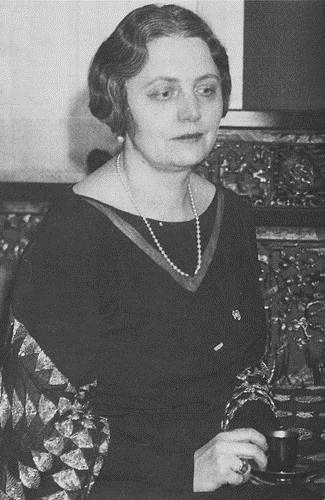
Ruth Fuller Sasaki (1892–1967)
Dharma name: 慧龍紹谿 Eryū Jōkei
The record of Linji
translation and commentary by Ruth Fuller Sasaki; edited by Thomas Yuho Kirchner. Honolulu, 2009.
HTML: The Record of Linji © 2009 University of Hawai‘i Press Sorry, the book was deleted!
PDF: The Record of Linji (with footnotes) Sorry, the book was deleted!Cf. https://info.stiltij.nl/publiek/meditatie/leraren/_historisch/linji-sasaki.pdf
PDF: The Recorded Sayings of Layman P'ang: A Ninth Century Zen Classic
Full Form & pp. 39-98.
Translated by Ruth Fuller Sasaki, Yoshitaka Iriya* & Dana R. Fraser
Weatherhill, 1971. pp. 39-98.
(no page numbers online!)
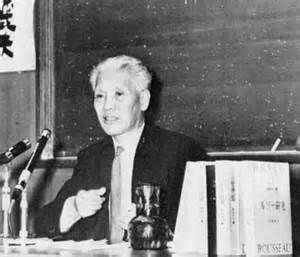
* 入矢義高 Iriya Yoshitaka (1910–1999)
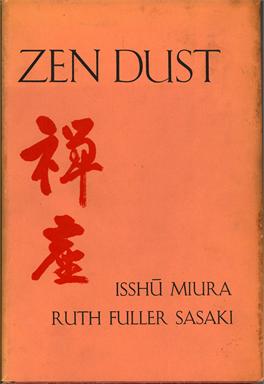
PDF: Zen Dust. The History of the Kōan and Kōan Study in Rinzai (Lin-Chi) Zen. By Isshū Miura and Ruth Fuller Sasaki. New York: Harcourt, Brace and World Inc., 1967. xxii, 574 pp.
Bibliography, Appendices, Index, Plates, Charts, Maps.
https://archive.org/details/zendusthistoryof0000miur
PDF: The Zen Koan: Its History and Use in Rinzai Zen
by Isshū Miura and Ruth Fuller Sasaki. New York: Harcourt, Brace and World Inc., 1965. xvii, 156 pp.
Reprinted in: Zen Dust, pp. i-xxii, 1-141.
PDF: The Definition of a Koan by Chung-feng Ming-pen
pp. 4-7.
Translated by Ruth Fuller Sasaki
Selections from A Zen Phrase Anthology
pp. 79-122.
Translated by Ruth Fuller Sasaki
Zen sites in China and Japan (Maps)
pp. 482-484.
Song of Zazen by 白隠慧鶴 Hakuin Ekaku (1686-1769)
pp. 251-253.
Translated by Miura Isshū** and Ruth Fuller Sasaki
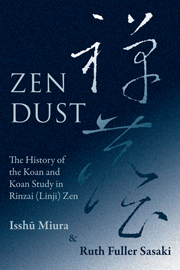
Reprint: Zen Dust: The History of the Koan and Koan Study in Rinzai (Linji) Zen, 2nd Edition, Quirin Press, 2015, xx + 531 pagesOriginally published in Kyoto in 1966 by the First Zen Institute of America in Japan, and by Harcourt, Brace & World in New York in 1967, "Zen Dust: The History of the Koan and Koan Study in Rinzai (Linji) Zen" quickly established itself as the only major resource into Zen koan study available in any Western language. Long since out of print, this Quirin Pinyin Updated Editions (QPUE) Revised Edition offers the full original text with the following features:
•Older Wade-Giles transliteration fully updated and revised to the current Pinyin standard.
•Fully re-typeset and proofed for typographical errors and inconsistencies.
•A fully searchable E-book edition of this title will be made available in PDF format. Not to be confused with the earlier title by the same authors on the Zen koan, which is a much shorter preliminary version of the present volume, Zen Dust: The History of the Koan and Koan Study in Rinzai (Linji) Zen is divided into five main sections:
• Part One is an extensive essay by Ruth Fuller Sasaki on the history of the koan in Chinese and Japanese Rinzai Zen and how it developed into a unique technique to aid the monk in quest of enlightenment.
• Part Two is a translation of a series of lectures on koan study given by the Zen master Isshū Miura Rōshi
• Part Three offers a selection of Zen phrases or capping phrases that were used as commentary and annotations to the often enigmatic koans.
• The notes to the first two sections of Zen Dust offer a veritable treasure trove of background information on the monks and masters that forged the koan-study tradition of Rinzai Zen in China and Japan.
• This is followed by an extensively descriptive bibliography that teases out the vast literature of Zen in particular and Buddhism in general by giving considerable background material not only on the content of the works but also the context in which they came to be put together. Along with the appendices, which include genealogical charts of Zen lines, and the extensive index, it is these last sections (totaling nearly 400 pages) that make Zen Dust an invaluable companion not only for students and Zen adepts seeking to delve in the unique spiritual training that koan study entails, but also for scholars and researchers of Zen Buddhism.
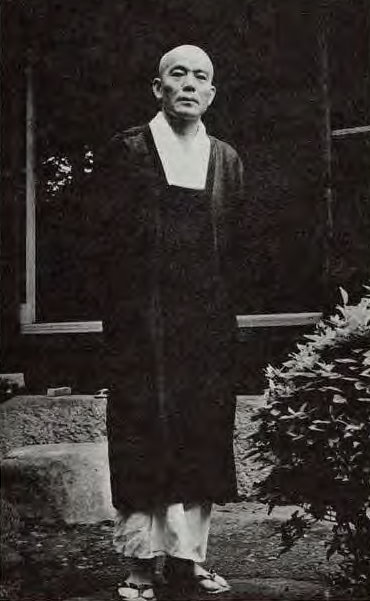
** 三浦一舟 Miura Isshū (1903-1978) of Kōon-ji 廣園寺, a training temple belonging to the Nanzen-ji 南禪寺 branch of Rinzai Zen situated not far from Tokyo. > More
雑誌記事 =Jisho Niwa
吾が師を語る 三浦一舟老師 =I talk about my teacher: Master Isshu Miura
掲載誌 禅文化 (225):2012 p.9-24 =Journal Zen Culture (225): 2012 p.9-24
Miura's Dharma Lineage
[…]
白隱慧鶴 Hakuin Ekaku (1686-1769)
峨山慈棹 Gasan Jitō (1727-1797)
卓洲胡僊 Takujū Kosen (1760-1833)
妙喜宗績 Myōki Sōseki (1774-1848)
迦陵瑞迦 Karyō Zuika (1790-1859)
潭海玄昌 Tankai Genshō (1811-1898)
毒湛匝三 Dokutan Sōsan (1840-1917) [豐田 Toyoda]
霧海古亮 Mukai Koryō (1864-1935) aka 河野霧海 Kōno Mukai or 南針軒 Nanshinken
巨山泰祐 Kyōsan Taiyū (1886-1954) [中村 Nakamura]
慈棹一舟 Jitō Isshū (三浦 Miura, 1903-1978)
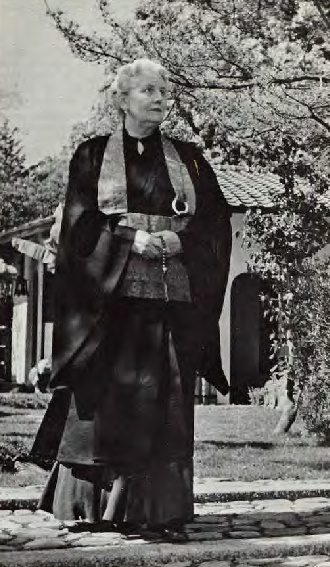
http://en.wikipedia.org/wiki/Ruth_Fuller_Sasaki
Ruth Fuller Sasaki (October 31, 1892 – October 24, 1967), born Ruth Fuller, was an important figure in the development of Buddhism in the United States. As Ruth Fuller Everett (during her first marriage), she met and studied with Daisetz Teitaro Suzuki in Japan in 1930. In 1938, she became a principal supporter of the Buddhist Society of America (later known as the First Zen Institute of America), in New York. She married Sokei-an, the Zen priest in residence there, in 1944, but he died within a year. In 1949, she went to Kyoto to find another roshi to live and teach in New York, to complete translations of key Zen texts, and to pursue her own Zen training, receiving sanzen from Gotō Zuigan.
She stayed in Kyoto for most of the rest of her life, becoming in 1958 the first foreigner to be a priest of a Rinzai Zen temple, and the only westerner, and the only woman, yet to be a priest of a Daitoku-ji temple. She was careful to record, however, that she did not perform the usual duties of a priest, "because I was a foreigner, a woman, untrained in temple procedures, and because I needed the years left me to carry on the work of spreading Zen to the west."
Sasaki was instrumental in the translations into English of many Zen texts. One of the most important was Zen dust; the history of the koan and koan study in Rinzai (Lin-chi) Zen, published in 1966 by her own First Zen Institute.[8] In 2006, Gary Snyder wrote, "Her writings from the sixties were ahead of their time and remain accurate and relevant."
Early life and developing interest in Eastern religions
Ruth Fuller was born and grew up in Chicago, and enjoyed wealth and privilege. She took piano lessons in Switzerland for several months in 1913, and also studied French and German with private tutors in Europe for a year and a half. In 1917, she married Edward Warren Everett, a trial attorney twenty years older than herself. At the end of 1918, a daughter was born, Eleanor. From 1938 to 1948, Eleanor was married to writer and Zen philosopher Alan Watts.
In 1923-24, Ruth and Eleanor went to the Clarkstown Country Club in Nyack, New York, for rest and healing. This resort was led by Pierre Bernard, and offered adult education in yoga and Eastern philosophy and religions. Then from 1927 to 1929, she studied Sanskrit and Indian philosophy at the University of Chicago.
First trips to Asia
On a 1930 family sojourn to East Asia, Ruth met D. T. Suzuki, who gave her basic instruction for meditation, and told her that the best way to learn about Zen would be to return to Japan for an extended stay. Back in the US, she kept up a meditation practice and a correspondence with Suzuki. In 1932, she returned to Japan, arriving April 1. Suzuki introduced her to Nanshinken Roshi (Kono Mukai) of the Rinzai Zen monastery in Kyoto at Nanzen-ji, and she became his student. At first, she sat in the roshi's small private temple, because she was not allowed in the zendo. Six days a week, she rose at 5am, did zazen until 7am, had breakfast, went to Nanzen-ji, did zazen there all day, returned home for supper and a bath, and did more zazen at home until midnight. Nanshinken gave her a koan, and Suzuki acted as interpreter between roshi and student. After a month, she began to sit in the zendo, where the monks, originally resistant, soon welcomed her presence. She was back in the US in the summer. Decades later, she referred to those months at Nanzen-ji as "the most completely satisfactory time I have ever had in my life."
Her research team in Kyoto
She gathered together and employed a small team to study and do translation work under her leadership, and under the banner of the First Zen Institute of America in Japan (or Nichibei Daiichi Zen Kyokai, founded in 1957). Her headquarters was Ryosen-an, a subtemple within Daitoku-ji. Most of the team had other, full-time jobs, and did work in this team part-time.[18] One of the main projects of the team was to produce a translation of the Record of Rinzai (or Rinzai-roku, or Record of Linji, or Lin-chi Lu), a classic text of sayings of the founder of Rinzai. Sasaki originally planned to use translations made by her deceased husband, Sokei-an, and recorded by his students in New York, but the researchers found these translations inadequate.[19]
The director of the team was Iriya Yoshitaka (1910–1999), who was considered the world's foremost authority on colloquial Chinese of the Tang and Sung Dynasties. He taught at Kyoto University, and eventually became Head of the Department of Chinese Literature at Nagoya University.
English professor Kanaseki Hisao (1918–1996) was on the team, as well as Yokoi (later Yanagida) Seizan (1922-), who taught at Kyoto University and later was president of Hanazono University. Yampolsky wrote in 1991 that Yanagida "is recognized as the foremost scholar of Zen Buddhism in both China and Japan."
Three Americans were on the team: Burton Watson, Philip Yampolsky, and Gary Snyder. (Sasaki sponsored Snyder's first trip to Japan.) They were also joined by Walter Nowick, a pianist and member of the First Zen Institute, to work on the Record of Rinzai.
Between 1959 and 1963, the Institute published several small pamphlets, including Zen: A Religion, Zen: A Method for Religious Awakening, Rinzai Zen Study for Foreigners in Japan, The First Zen Institute of America in Japan, Ryosen-an Zendo Practice, and The Wooden Fish: Basic Sutras and Gathas of Rinzai Zen.
This group was dealt a blow in August 1961, when she dismissed Yampolsky (whom she accused of stealing the team's translation of the Rinzai-roku to publish it as his own), and Watson and Snyder resigned in protest. This may be considered the culmination of a long-standing tension between Sasaki's authority as an employer with an autocratic style, and the scholarly authority of members of the team. The three Japanese scholars continued to work on Zen Dust for her. Zen Dust was finally published, first in Japan in 1966, then in the US the following year. It was preceded by Zen Koan, a four hundred page shorter edition in 1965. The Record of Rinzai was published after Sasaki's death, in 1975, as The Record of Lin-chi, but without Iriya's notes or Yanagida's introduction.
Her zendo at Ryosen-an
At Ryosen-an, a subtemple just inside the northern boundary of Daitoku-ji, Ruth Fuller Sasaki maintained a small but beautiful zendo (a hall where people could practice zazen, or sitting meditation) named Zuiun-kun, which had room for about 15 people. Only Westerners (no Japanese) practiced zazen here. Each person sat on a padded cushion on a raised platform for about 25 minutes. Then there was a bell. Everyone stood up, walked slowly (kinhin) around the outside of the hall, then returned to sit 25 more minutes. After four sittings (two hours), all of the people went to bow to an American teacher named Dana Fraser (and sometimes Ruth Fuller Sasaki) in her workplace near the zendo, then they went home. The zendo was full for most of each summer. Many Westerners first learned how to practice zazen in this zendo.
Final years
Sasaki continued to do her utmost to complete as many of her long-standing projects as possible, amidst deteriorating health in her last years. She collapsed from exhaustion while in Europe to deal with European publishers. She was at Ryosen-an when she died of a heart attack on October 24, 1967.
Bibliography
Sasaki, Ruth Fuller; Zen: a religion, (1958) First Zen Institute of America in Japan, Kyoto, 32 p.
Reprinted in: Zen pioneer 137ffSasaki, Ruth Fuller; Zen: a method for religious awakening, (1959) First Zen Institute of America in Japan, Kyoto, 28 p.
Reprinted in: Zen pioneer 159ffSasaki, Ruth Fuller; Rinzai Zen Study for Foreigners in Japan, (1960) First Zen Institute of America in Japan, Kyoto, 104 p.
Reprinted in: Zen pioneer 179ffMiura, Isshū; Sasaki, Ruth Fuller; Zen Dust: the history of the koan and koan study in Rinzai (Lin-chi) Zen (1966) Harcourt, Brace & World. xxii, 574 pp.
2nd Edition: Quirin Pinyin Updated Editions (QPUE) Revised Edition, Quirin Press, 2015, Paperback xx, 531 pp.
Miura, Isshū; Sasaki, Ruth Fuller; The Zen Koan: Its History and Use in Rinzai Zen (1965) First Zen Institute of America in Japan, Kyoto
Sasaki, Ruth Fuller; Iriya, Yoshitaka; Fraser, Dana. The Recorded Sayings of Layman P'ang: a Ninth-Century Zen Classic (1971) Weatherhill.
The Recorded Sayings of Ch‘an Master Lin-chi Hui-chao of Chen Prefecture
Complied by his humble heir Hui-jan of San-sheng
Translated from the Chinese by Ruth Fuller Sasaki
Institute for Zen Studies, Kyoto, 1975Sasaki, Ruth Fuller; The Record of Linji (2009), edited by Thomas Yuho Kirchner. University of Hawai‘i Press, Honolulu.
PDF: Zen pioneer: the life & works of Ruth Fuller Sasaki
by Isabel Stirling; foreword by Gary Snyder
Shoemaker & Hoard, 2006, 295 p.
Foreword by Gary Snyder ix
Preface xvPart One: Her Life
1. The Chicago Years, 1892-1929 3
2. First Trips to Asia, 1930-1940 11
3. New York, 1941-1948 37
4. Kyoto Beginnings, 1949-1955 47
5. Rebuilding Ryosen-an, 1955-1960 71
6. Research and Translation, 1960-1967 109
7. Epilogue: Beyond 1967 131Part Two: Her Work
Zen: A Religion 137
Zen: A Method for Religious Awakening 159
Rinzai Zen Study for Foreigners in Japan 179Acknowledgments 247
Chronology 251
Endnotes 259
Glossary 271
Bibliography 275
Index 291
Sasaki, Ruth Fuller (1892-1967)
Pioneer of Zen Buddhism in USA. Early 1930s: to Japan; zazen at Nanzenji (Kyoto) for a few months. 1938: settled New York City; became supporter of Sokeian Sasaki's Buddhist Society of America (later The First Zen Institute of New York, later still of, America). 1994: married Sokei -an Saski (died 1945). 1949: returned to Japan with 3-fold purpose: (1) to find a teacher to take over First Zen Institute; (2) to complete transactions of Rinzairoku and other Zen texts; (3) to complete her own Zen training. Studied at Daitokuji with Goto Zuigan Roshi. 1956: allowed to build a small zendo and library, Ryosen-an, at Daitoku-ji; this is a branch of First Zen Institute of America; believed that the only authentic way to study Zen was in Japan. 1958: ordained a Zen priest at Daitoku-ji, sponsored by Sesso Oda Roshi. Books including Zen - A Religion; Zen - A Method for Religion Awakening; Zen Dust and The Zen Koan (with Isshu Miura); The Recorded Sayings of Layman P'ang (represent as A Man of Zen, with Iriya Yoshitaka and Dana R Fraser); and Recorded Sayings of Lin-Chi (with Yoshitaka).
Ruth Fuller Sasaki, who died in 1967, was a pivotal figure in the emergence and development of Zen Buddhism in the United States. She is the only Westerner--and the only woman--to be made a priest of a Daitoku-ji temple and was mentor to Burton Watson, Philip Yampolsky, and Gary Snyder, and mother-in-law of Alan Watts. This is the first biography of her remarkable life. Few devoted their lives to Zen Buddhism as Ruth Fuller did. As a senior student of Sokei-an Sasaki in New York, Ruth helped him develop the infrastructure of what would eventually become The First Zen Institute in New York City. She married Sasaki in 1944, and it was her mission to maintain The First Zen Institute and later, to establish The First Zen Institute of America in Japan. Her legacy remains today in the Zen facilities she helped build in New York and abroad and in the many texts she saw through translation, published from the 1950s to the 1970s. For the first time in book form, three of her writings are included here--"Zen: A Religion," "Zen: A Method for Religious Awakening," and "Rinzai Zen Study for Foreigners in Japan."
Ruth Fuller Sasaki, the Grandmother of Zen in the West
https://web.archive.org/web/20130122002036/http://www.shambhala.com/blog/zen-art/ruth-fuller-sasaki-the-grandmother-of-zen-in-the-west
November 5, 2012
Halloween 1892 was the birth date of Ruth Fuller Sasaki, the Grandmother of Zen in the West. Sasaki was the principal force behind the First Zen Institute of America, the pioneering Zen organization in the United States. She married Sokei-an Sasaki, one of the first Japanese Zen priests to teach in America and live there permanently. In 1930 she was briefly a student of D.T. Suzuki in Japan. In 1932, Suzuki arranged for her to train under Kono Mukai, abbot of Nanzen-ji, one of the major Zen temples in Japan. Sasaki sat zazen for hours under Mukai's direction, first in his private temple, and then in the large meditation hall with the rest of the monks. Her husband, Sokei-an, died in 1945, and she in 1949, returned to Japan. Her next Zen master was Goto Zuigan, head abbot of Daitoku-ji. (Goto was also the master of the scholar Huston Smith.) Sasaki eventually became a Zen priest—the first foreigner to do so and a female to boot—at Ryosen-en, a sub-temple on the grounds of Daitoku-ji. At Daitoku-ji, Sasaki established an impressive research team to work on a translation of the Rinzai Roku and other texts. After a long and influential Zen life—Alan Watts was her son-in-law and Gary Snyder her employee—Sasaki died at Ryusen-en of a heart attack on October 24, 1967.
In the Shambhala Zen Art Gallery, there are Daruma paintings by the Zen masters Sasaki trained under in Japan: Kono Mukai (Nanshinken 1864–1935) and Goto Zuigan (1879–1965). During training, Mukai was very strict, but outside of the zendo, he was a charming old gentleman, mischievous but kind. Sasaki later said her training under Mukai was the best experience of her life. Sasaki's relationship with Zuigan was stormier—both of them had very strong wills—but he was the master who ordained her a priest and found her a temple.
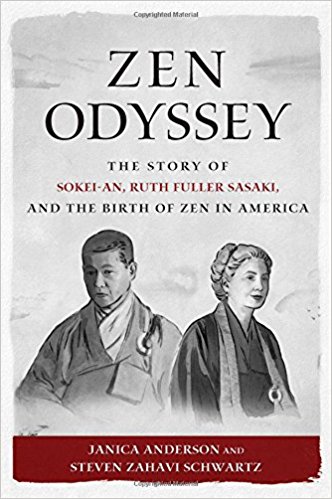
PDF: Zen Odyssey: The Story of Sokei-an, Ruth Fuller Sasaki, and the Birth of Zen in America
by Janica Anderson, Steven Zahavi Schwartz
Wisdom Publications, 2018, 384 p.